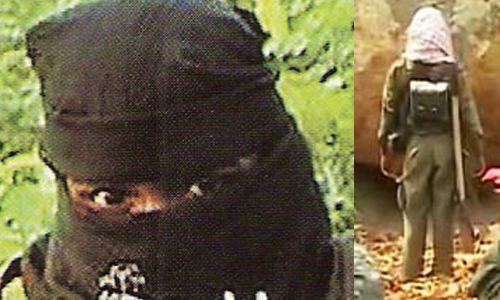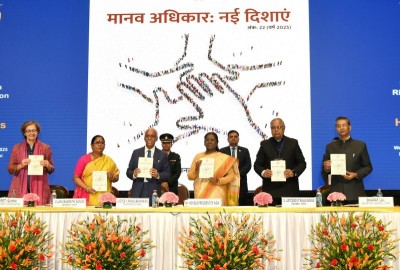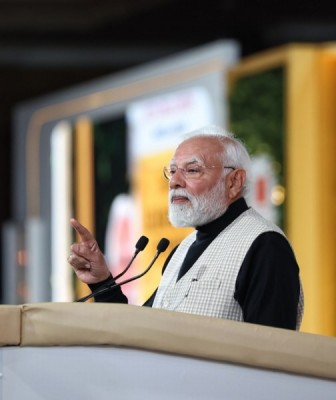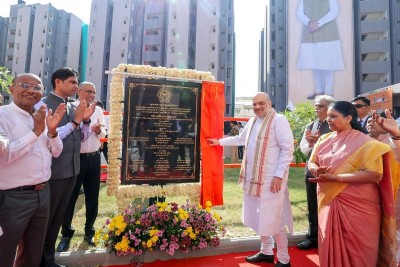
Odisha:Maoists: Holding on
On February 3, 2014, Maoists shot dead a contractor, Laxmi Narayan Patnaik (23), in broad daylight at the weekly market in Trilochanpur under Lanjigarh Police Station limits in Kalahandi District. Again, posters left behind claimed that Patnaik was a ‘police informer’. The Maoists had killed the victim’s brother Ajit Patnaik on July 27, 2011, in the same area.
Since the beginning of 2015 the Maoists have killed five civilians in Odisha.
On January 8, 2015, Odisha Chief Minister Naveen Patnaik complimented the Odisha Police for achieving ‘zero casualties’ among the Police and Security Forces (SFs) in 2014 in dealing with Left Wing Extremist (LWE) violence, while killing at least six Maoists in the year during exchanges of gunfire between the Police and extremists. The Chief Minister also noted that, in 2014, Maoist activities had been brought ‘under control’ across most of the State, with the exception of nine Districts: Malkangiri, Koraput, Nuapada, Raygada, Nabarangpur, Kalahandi, Kandhamal, Balangir and Baragarh. “These Districts should be in our focus. All possible steps should be taken to counter the Leftwing extremist activities in these areas,” Naveen Patnaik declared, adding that there had been progressive improvement in the overall Naxal (LWE) scenario in the State with respect to frequency of violence, organisational activities, recruitment and mass mobilisation by the extremists.
According to partial data compiled by South Asia Terrorism Portal (SATP), Odisha recorded 41 fatalities in LWE-related incidents in 2014, including 31 civilians, one belonging to SFs and nine LWEs, in comparison to 54 fatalities in 2013, including 22 civilians, seven SF personnel and 25 LWEs.
While the Chief Minister drew satisfaction in the claim that the State Police suffered no casualty, media reports indicated that one Special Police Officer (SPO), identified as N. Munda, was killed by the Maoists at Bandhugaon near Rourkela in Sundargarh District on August 15, 2014. This does not, however, detract from the fact that the SFs deserve credit for sharply reducing fatalities among personnel from 19 in 2012, to seven in 2013, to just one in 2014. Significantly, the fatalities suffered by Maoists in Odisha also reduced to nine in 2014, from 25 in the previous year (2013), even as civilian fatalities increased from 22 to 31, indicating that both sides were trying to avoid direct armed engagement.
The increase in civilian fatalities in 2014 over the preceding two years is clearly a cause for worry. This trend suggests that, even while the Maoists are exercising extreme caution to avoid confrontation with the SFs, their efforts at political consolidation and the quiet elimination of opposition on the ground continue.
In terms of geographical spread in 2014, fatalities were recorded in just five Districts - Koraput (14, including 10 civilians and four Maoists); Malkangiri (21, including 19 civilians and two Maoists); Nuapada (one Maoist), Rayagada (one civilian) and Sundargarh (four, including one civilian, one SF trooper and two extremists). In 2013, fatalities had been recorded in seven Districts - Malkangiri (35, including 18 civilians, one SF trooper, 16 Maoists); Koraput (seven, including two civilians, four SF personnel and one Maoist); Nuapada (four, including two civilians and two SF personnel); Rayagada (four LWEs); Balangir (two LWEs); Bargarh (one LWE); Gajapati (one LWE). However, in terms of civilian and SF personnel fatalities caused by Maoists, Malkangiri and Koraput continued to dominate the scene. Balangir, Bargarh and Gajapati, which recorded fatalities in 2013, were free from such killings in 2014; while Sundargarh was added to the 2014 list.
There was just one major incident (resulting in three or more fatalities) in 2014. On April 27, 2014, Maoists killed three villagers within the Mathili Police Station limits in Malkangiri District. 2013 had seen three major incidents. Nevertheless, the 2014 total of civilians killed by Maoists was significantly higher, as the rebels killed civilians at fairly regular intervals in 24 incidents, suggesting relatively poor levels of general security.
In 2014, LWEs engaged in exchange of fire with SFs in 25 incidents in 13 Districts: Koraput four; Malkangiri three; Ganjam three, of which two were with the breakaway Odisha Maobadi Party (OMP); Sundargarh three, all of which were with the People’s Liberation Front of India (PLFI); Sambalpur two; Kandhamal, two; Balangir, two; Nabarangpur, Nuapada, Boudh, Angul, Deogarh, and Kalahandi, one each. In 2013, LWEs engaged in exchanges of fire with SFs in 21 incidents in 10 Districts: Malkangiri six; Balangir, three; Rayagada, three; Bargarh and Sundargarh, two each; Koraput, Kandhamal, Gajapati, Sonepur and Nuapada, one each. Exchange of fire incidents were thus reported in three more Districts in 2014, over 2013; moreover, seven of these Districts (Boudh, Angul, Deogarh, Kalahandi, Nabarangpur, Sambalpur and Ganjam) had not recorded any such incidents in the previous year.
Among other activities, Maoists were involved in six explosions (five in Malkangiri and one in Nuapada), six incidents of arson (Nuapada and Rayagada, two each; Bargarh and Koraput, one each) and gave calls for bandhs (general shutdown strikes) on two occasions in 2014. In 2013, Maoists had been involved in four incidents of explosion (three in Malkangiri and one in Koraput); seven incidents of arson (Malkangiri, two; Koraput, Nuapada, Kalahandi, Sundargarh and Rayagada, one each); and gave calls for bandhs on nine occasions.
A Maoist camp was discovered at Golluru in Koraput District along the border with Vizianagaram District of Andhra Pradesh in November 2014. Located being in a valley where little previous activity had been noticed, neither the Vizianagaram nor the Koraput Police had envisaged the possibility of a Maoist camp at Golluru.
An analysis of over ground and underground activities indicates that two Districts - Malkangiri and Koraput - remain highly affected; Nuapada and Sundargarh Districts are now moderately affected; while Gajapati, Ganjam, Sambalpur, Bargarh, Kandhamal, Balangir, Nabarangpur, Boudh, Angul, Deogarh, Kalahandi, Keonjhar and Rayagada remain marginally affected. In 2013, three Districts (Koraput, Malkangiri and Nuapada) were highly affected, five were moderately affected and seven were marginally affected.
2014 was marked by several significant achievements in the fight against LWEs. One was the arrest of Sabyasachi Panda on July 17, 2014. Panda had broken away and been expelled from CPI-Maoist in August 2012, and had created his own outfit, the OMP immediately thereafter. He made efforts to consolidate the anti-Maoist LWE space in the State with the subsequent formation of the Communist Party of India – Marxist-Leninist-Maoist (CPI-MLM) in May 2014, but his marginal group was quickly decimated.
Another crucial arrest was that of Tella Anil Kumar alias Chandu (40), who carried a reward of INR 4 million [INR two million announced by the Odisha Government and INR two million by the Andhra Pradesh Government], in Koraput District on February 1, 2014. He was part of the nine-member ‘core committee’ of the Andhra Odisha Border State Zonal Committee (AOBSZC) of the CPI-Maoist, headed by Central Committee (CC) member Akkiraju Haragopal alias Ramakrishna alias (RK). Chandu was next in importance only to RK in the AOBSZC and was heading the Maoist ‘intelligence wing’ in the Malkangiri, Koraput-Srikakulam and East Visakha ‘divisions’. He was operating in Koraput, Malkangiri, Visakhapatnam rural and Vizainagaram Districts of Andhra Pradesh and Odisha.
Other significant arrests in Odisha during 2014 included: 'assistant commander' Sumitra Kunwar [reward money: INR 400,000]; Singa Kattami alias Mahesh, who was in charge of protection of Maoist leader Udaya, the 'divisional secretary' of the Malkangiri division [reward money: INR 100,000]; Tulasi Mangingi [reward money: INR 100,000]; Palu Wadeka [reward money: INR 100,000]; 'area commander' Mino Hikoka alias Bikas; and 'commander' Katru Tadingi. According to SATP data a total of 49 LWE-related arrests were made in 2014.
In a major breakthrough, Nachika Linga, president of the Narayanpatna-based Maoist front organisation Chasi Mulia Adivasi Sangha (CMAS), surrendered on October 28, 2014. His surrender was preceded by that of over 2,400 CMAS cadres in 2013, leaving the organisation virtually dysfunctional. Other significant surrenders in 2014 included Deva Padiami alias Sandhya (30), who surrendered on March 8 and carried a cash reward of INR 500,000 on her head. She surrendered after the arrest of her husband Tella Anil Kumar alias Chandu. Padiami was a ‘divisional committee member’ heading the Boipariguda area committee and Gupteswar local squad. She was instrumental in setting up base at Ramagiri, Gupteswar and Boipariguda in Koraput and in areas, bordering Malkangiri. Other significant surrenders included Bhima alias Rushi Sodhi [reward money: INR 400,000]; Jambo Mandingi alias Walsi [reward money: INR 200,000], and Sandhayaalias Shivabati, Jakrius Munda, Harun Munda and Jeetan Bari, each carrying a reward of INR 100,000. Another four Maoists, including ‘area committee’ member Krishna Praska, along with Kosai Wateka alias Nirmala, Raju Hikoka alias Kiran and Durjan Mandingi carrying rewards of INR 100,000 each also surrendered in the State. According to SATP data, a total of at least 94 Maoists surrendered in Odisha in 2014.
To deal with the LWE challenge more effectively, the Odisha Police have proposed the establishment of an additional two Special Armed Police (SAP) battalions in the State. At present there are 13 OSAPs and eight India Reserve Battalions (IRBs) in Odisha. Further, 17 Central Armed Police Force (CAPF) battalions – eight of the Border Security Force (BSF); eight of the Central Reserve Police Force (CRPF); and one of the Commando Battalion for Resolute Action (COBRA) – are currently deployed in Odisha. On February 2, 2015, Chief Minister Patnaik demanded another two CAPF battalions from the Centre, to check the possible influx of Maoists from Chhattisgarh, as pressure on them was likely to increase due to anticipated increases in Force concentration in Chhattisgarh. However, on February 4, 2015, Arun Kumar Ray, Additional Director General (ADG) of the Odisha Police in charge of OSAP, stated that the deployment of CAPFs for anti-Maoist operations and law and order maintenance was a major financial burden on the State Government. The Centre had demanded INR 13 billion from the Odisha Government towards cost of deployment of CAPFs. Odisha has a Police-population ratio of 124 per 100,000, as of December 31, 2013, according to National Crime Records Bureau (NCRB) data, significantly below the national average of 141.
Bridging the ‘development gap’ has long been a critical component of the State’s anti-Moist strategy, but Odisha’s performance on this parameter has largely been found wanting. Koraput District spent only 13 per cent of the INR 300 million sanctioned to it under “Additional Central Assistance (ACA) for LWE Affected Districts” [previously the Integrated Action Plan (IAP)] for 2014-15, till December 31, 2014. During the ongoing financial year, the Administration took up 555 projects, of which only 51 projects worth INR 38.8 million were completed. Further, on November 21, 2014, the Minister of State for Health and Family Welfare, Atanu Sabyasachi Nayak, while answering a question in the Odisha State Assembly, disclosed that there were as many as 1,647 posts of doctor, that is, 34.02 per cent of the sanctioned strength, were vacant in Odisha. This is unsurprising, considering earlier observations about civil administration in the State.
Meanwhile, BSF and CRPF have sought improvement of 18 ‘critical roads’ in LWE-affected pockets in Odisha. Of the 18 road projects, the BSF wants the Odisha Government to take up seven in Koraput District alone. Similarly, Malkangiri and Nabarangpur Districts have three and two such road projects, respectively. The CRPF has also suggested development of six road projects in Nuapada, Kalahandi, Keonjhar and Sundargarh Districts.
Reflecting a measure of callousness in the attitude of the state towards the victims of LWE violence, the Comptroller and Auditor General (CAG) in its 2014 reports on Odisha, observed that scrutiny of 41 cases of ex-gratia payment to civilians killed by LWEs in the Koraput and Rayagada Districts revealed that, in 28 (68 per cent) cases, payment of ex gratia to families was made with delays ranging between 10 months and 28 months.
With the arrest of Sabyasachi Panda and the surrender of Nachika Linga, the Maoists in Odisha have lost the services of their most violent face and their most prominent front organisation in the State. This provides a unique window of opportunity to the State to step up its efforts. However, the rising number and regularity of civilian killings makes it clear that the LWEs continue to retain considerable strength, and are making systematic efforts for their organisational revival.
Support Our Journalism
We cannot do without you.. your contribution supports unbiased journalism
IBNS is not driven by any ism- not wokeism, not racism, not skewed secularism, not hyper right-wing or left liberal ideals, nor by any hardline religious beliefs or hyper nationalism. We want to serve you good old objective news, as they are. We do not judge or preach. We let people decide for themselves. We only try to present factual and well-sourced news.







